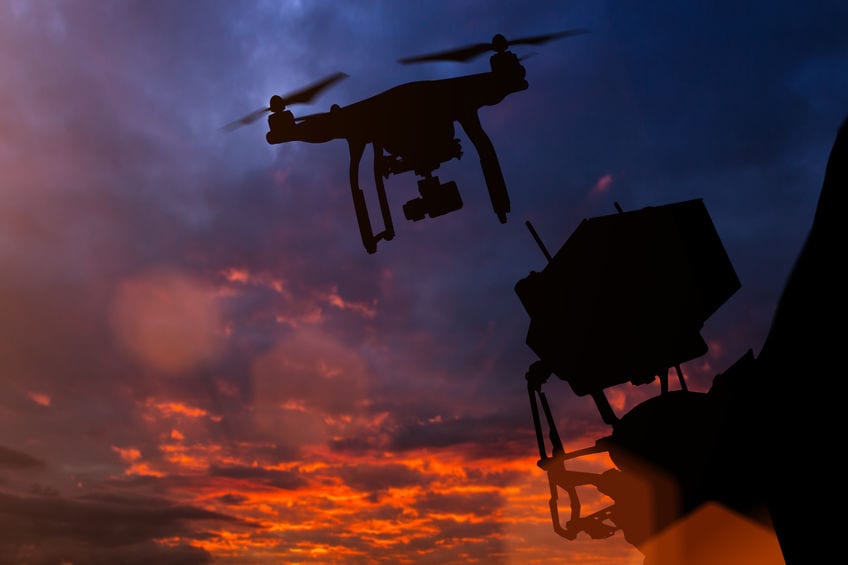
News
Is That Your Drone in The Sky? FAA May Propose Remote Drone ID This Week
Is That Your Drone in The Sky? FAA May Propose Remote Drone ID This Week
There are reports that the FAA (America’s Federal Aviation Administration) may announce that they will begin to make moves to enact a new rule to allow pilots to fly their drones over people and beyond the line-of-sight as early as this week.
As reported in The Recorder, the new regulatory proposal would require all drones to carry a remote ID technology, in a move that is as a critical first step to make commercial applications for drones safer and secure for both pilots and civilians.
Brendan Schulman, Vice President of policy and legal affairs at DJI sees the logic in such a proposal. “The FAA is not going to create future rules for expanded operation of drones until the remote identification framework is in place,” he said.
The ability to remotely identify airborne drones would help address issues such as incursion of sensitive airspace such as prisons and hospitals, privacy concerns of the general public and more nefarious uses of drones such as terrorist activities. However, how airspace regulators plan to approach identification and tracking of drones is not without controversy.
There are already questions about the FAA’s scope over drone registration and identification. In May 2017, the FAA’s requirement for hobby drone users register their devices was successfully challenged in U.S. Court of Appeals for the District of Columbia Circuit when drone hobby pilot John Taylor, challenged the legality of the FAA’s drone-registration program.
It is speculated by drone law specialists that the FAA may announce the remote ID proposal at the Unmanned Aircraft Systems (UAS) Symposium which starts next Tuesday in Baltimore, although an FAA spokesman said he could not comment on whether the agency planned to make any new rule announcements soon.
Despite regulatory legal hurdles, moves towards remote ID technology have been simmering since early 2017, after the FAA rolled out a regulation to allow drone flights over people by commercial pilots – something that is still only allowed on a case-by-base basis.
In response to fears of dangers to the public expressed by national law and security officials, the FAA quickly put a stop to the flights-over-people rule and started discussions with hobbyist groups, drone manufacturers, companies and authorities about how to deploy remote ID technology.
At the last UAS Symposium, these fears were publicly acknowledged by the FAA’s then-Administrator Michael Huerta. “In the coming weeks, we will begin bringing the industry and national security leadership together to address these issues,” he said. “We hope to create a mutual understanding about the government’s security concerns and discuss how we can collaborate to address them.”
Thus began the ARC, or the Unmanned Aircraft Systems Identification and Tracking Aviation Rulemaking Committee, in order to create a set of recommendations for the remote identification of drones. Two options were put forward: have drones broadcast a unique ID via a radio signal, or enable a cellular connection to send the drone’s ID data to a government database.
While the options were welcomed broadly by industry and law enforcement stakeholders, there was some dissent on whether the rule should apply to drones owned by hobby pilots.
The Commercial Drone Alliance and Aerospace Industries Association and other organisations however, disagreed with report’s recommendation that certain smaller UAVs be excluded from the remote ID rules.
“This exemption is a loophole that swallows the rule,” a Commercial Drone Alliance dissent file said. “It would permit a huge segment of the UAS community to avoid participating in the UAS ID and Tracking system and complying with the corresponding ID and Tracking regulations.”
The AMA (the Academy of Model Aeronautics) who participated in the ARC, agrees to the remote ID requirements on principles so long as low-capability drones such as toys are not included. “We agree that tracking and remote identification makes sense at some level, depending on the UAS sophistication and capability,” the group said in a statement in December.
The FAA appears to be treading cautiously, though. It was noted in January that rather than rolling out a ready-to-go plan, the FAA intends to start by issuing an Advance Notice of Proposed Rulemaking. Attorneys Dean Griffith and Benjamin Lee wrote that the approach indicates the FAA “is still in fact-finding mode and not yet ready to lock into a proposal.”
The possibility of a remote ID regulation also raises issues about the privacy of drone operators. For example, authorities would in fact be able to create a database recording the locations and paths every commercial drone has ever flown.
Schulman, who participated in the advisory committee, says the ARC didn’t raise this as an issue. “In some ways it was an unbalanced ARC, because it had a narrow objective” to identify ways to ID drones. There was little consideration for balancing those interests against the civil liberties and privacy concerns of operators, he added.
A coalition of news media groups also highlighted similar concerns in a dissent to the ARC report, saying it “contains insufficient consideration of the constitutional guarantees for journalists to gather, and the public to receive, news and information in the public interest.”
If followed, the recommendations would give officials “unbridled discretion before accessing a database containing personal identifying information or historical tracking information about the operation” of unmanned aircraft,” the coalition added.


















